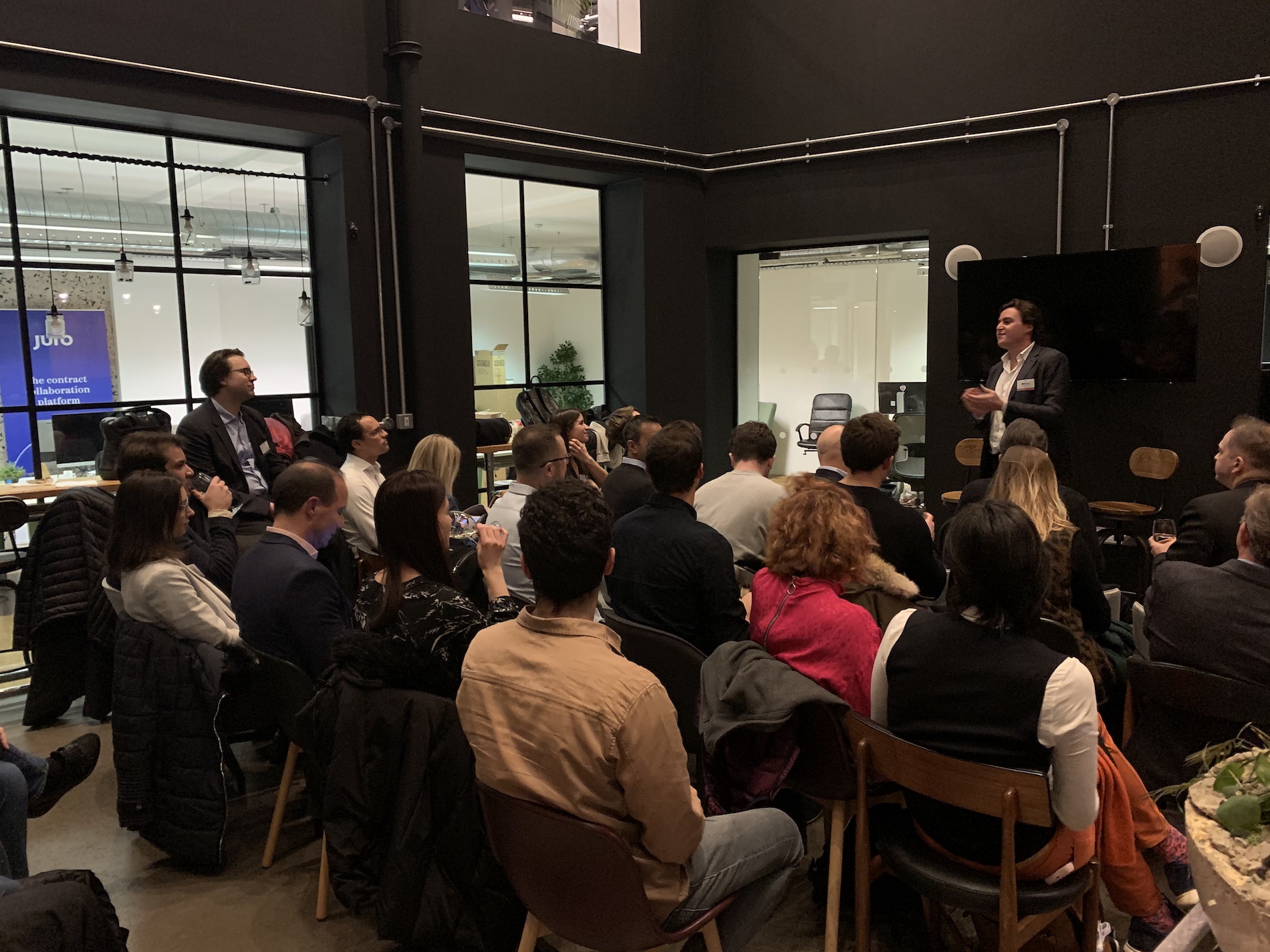
Starting a business can be a daunting task, especially when the odds of success are against you. A common mistake that founders make is spending too much time developing a comprehensive business plan without testing their assumptions through validated learning. This can result in wasted resources and missed opportunities. That’s why many entrepreneurs turn to the Lean Startup method. In his bestselling book, “The Lean Startup,” author Eric Ries outlines a revolutionary approach to building and growing a startup that is based on rapid experimentation, customer feedback, and continuous iteration.
Whether you’re a seasoned entrepreneur or just starting out, the Lean Startup methodology can help you to build a successful business. In this article, we’ll explore the key concepts and principles of the Lean Startup methodology. We’ll also detail the benefits of implementing it in your startup. Additionally, you’ll learn some of the common challenges and pitfalls that founders may face when implementing the Lean Startup methodology, and tips and advice on how to overcome them.
The Lean Startup Methodology and Why It’s Important for Founders:
The Lean Startup methodology is a customer-centric approach to building and growing a startup. It emphasizes rapid experimentation and continuous iteration. Traditional business models often rely on long-term planning and execution. However, the Lean Startup method is designed to help founders quickly validate assumptions and hypotheses, build a better product or service, and avoid costly mistakes and wasted resources. The Lean Startup methodology emphasizes sustainable growth through continuous experimentation and iteration. It is designed to help founders build businesses that are better equipped to meet the evolving needs of customers and the market.
At Founders Network’s fnSummit 2021, Roadster co-founder Trey Matteson shared insights on creating a successful lean startup with a small, highly motivated, flexible team. According to Matteson, Roadster prioritized efficiency from the beginning, following the agile methodology of breaking down problems into smaller tasks that could be tackled incrementally. “We were always looking for the minimum viable piece we could ship, get feedback on, and iterate,” he said.
Founders face a range of challenges when starting a new business, from developing a clear vision and identifying customer needs to building a strong team and raising capital. The Lean Startup methodology can help founders to overcome these challenges by providing a framework for rapid experimentation and iteration that allows them to test and refine their ideas quickly and efficiently. By implementing the principles of the Lean Startup methodology, founders can build sustainable businesses that not only meet the needs of their customers but also contribute positively to the world
As Eric Ries writes in “The Lean Startup,” “The only way to win is to learn faster than anyone else.”
To learn more about the Lean Startup Methodology, see if you qualify for membership to join Founders Network.
Lean Startup by Eric Ries: Chapter Summary and Expert Opinion:
In this section, we’ll provide a lean startup summary.
Part 1: Vision:
In this chapter, Eric Ries discusses the importance of developing a clear vision for your startup that is based on a deep understanding of customer needs and desires. He emphasizes the need for founders to create a hypothesis about the problem they are trying to solve and the solution they are proposing. He then recommends testing that hypothesis through rapid experimentation and iteration.
Part 2: Steer:
In this chapter, Ries discusses the importance of steering your startup in the right direction by setting goals, measuring progress, and making data-driven decisions. He emphasizes the need for founders to establish a feedback loop that allows them to collect and analyze data from customers, employees, and other stakeholders. The next step is to use that data to make informed decisions about the direction of the company.
Part 3: Accelerate:
In this chapter, Ries discusses the importance of accelerating growth by scaling the company’s operations, increasing customer acquisition, and improving the product or service. He emphasizes the need for founders to focus on sustainable growth that is based on a deep understanding of customer needs and desires. He advocates avoiding the temptation to chase short-term gains at the expense of long-term success.
The Key Principles of The Lean Startup Methodology
The Lean Startup methodology is based on several key principles that are designed to help founders build successful businesses. These are designed to maximize chances of success and minimize the risks of failure. Some of the key principles include:
Validated learning
The concept of validated learning involves testing assumptions and hypotheses through experimentation and feedback from customers. This allows founders to make informed decisions based on real data rather than assumptions or guesses.
Build-measure-learn feedback loop
The build-measure-learn feedback loop is a core component of the Lean Startup methodology. It involves building a minimum viable product (MVP), measuring its performance and collecting feedback from customers, and using that feedback to improve the product and iterate.
Continuous innovation
Continuous innovation is a key principle of the Lean Startup methodology. It emphasizes the need for ongoing experimentation, iteration, and adaptation in response to changing market conditions and customer feedback.
Customer-centricity
Customer-centricity is another key principle of the Lean Startup methodology. It focuses on the importance of understanding and meeting the needs of customers through continuous experimentation, feedback, and iteration.
Lean principles
The Lean Startup methodology is based on several Lean principles, including the elimination of waste, the optimization of resources, and the focus on delivering value to customers.
Agile development
Agile development is an iterative and flexible approach to software development. It emphasizes rapid iteration and adaptation in response to changing market conditions and customer feedback. The Lean Startup methodology is closely aligned with Agile development principles.
How the Lean Startup Model Differs from Traditional Business Models
The Lean Startup model differs from traditional business models in several key ways. The traditional business plan focuses on long-term projections and detailed financial analyses. But, the Lean Startup methodology advocates for a more flexible approach that emphasizes rapid experimentation and iteration based on customer feedback. One of the biggest differences is the emphasis on rapid experimentation and iteration. This allows founders to test assumptions and hypotheses quickly and efficiently. Additionally, the Lean Startup model focuses heavily on customer feedback and continuous innovation, rather than relying on traditional market research methods.
What is Lean Manufacturing
Lean manufacturing is a production strategy that aims to eliminate waste and improve efficiency by focusing on value creation for customers. When combined with the principles of the Lean Startup methodology, it can help startups create a sustainable and profitable business model. One of the benefits of lean manufacturing is that it enables startups to optimize their production process, reduce costs, and increase quality.
In a successful startup, customer lifetime value is a key metric that helps founders understand the long-term value of each customer to the business. By reducing waste and improving efficiency through lean manufacturing, startups can better serve their customers and create products that meet their needs. This to increased customer loyalty and higher customer lifetime value.
However, to successfully implement lean manufacturing, startups need to focus on creating a culture of continuous improvement and learning. This requires a willingness to experiment, take risks, and pivot quickly based on customer feedback.
In addition, startups need to be aware of the potential challenges and pitfalls of implementing lean manufacturing. This may include resistance to change from team members who are used to traditional manufacturing processes, difficulties in sourcing and managing suppliers, and the need to balance efficiency with innovation and creativity. By taking a thoughtful and strategic approach to implementing lean manufacturing, startups can overcome these challenges and create a sustainable and successful business model.
The Benefits of Implementing the Lean Startup Methodology
Implementing the Lean Startup methodology can bring numerous benefits to founders. This includes the ability to validate assumptions and hypotheses quickly and efficiently, build a better product or service that meets the needs of customers, and avoid costly mistakes and wasted resources. The Lean Startup methodology can also help founders to adapt quickly to changing market conditions and maximize their chances of success. By implementing the Lean Startup methodology, founders can create a sustainable business model that adapts to changing market conditions and meets the needs of their customers.
According to a survey conducted by Startup Genome, startups that pivot once or twice raise 2.5 times more money, have 3.6 times better user growth, and are 52 percent less likely to scale prematurely than startups that pivot more than twice or not at all.
A study by CB Insights found that the number one reason why startups fail is due to lack of market need. The Lean Startup Methodology can help address this by emphasizing the importance of customer feedback and iteration.
A report by McKinsey found that agile organizations grow revenue 37 percent faster and generate 30 percent higher profits than non-agile organizations. The Lean Startup Methodology, with its focus on continuous experimentation and iteration, shares many similarities with agile methodology.
These statistics illustrate the potential benefits of implementing the Lean Startup Methodology and how it can help startups increase their chances of success.
How to Implement the Lean Methodology in Your Startup
To implement the Lean Startup methodology in your startup, you can follow these steps:
- Identify and prioritize customer needs. Start by identifying the needs and pain points of your target customers and prioritizing them based on their importance.
- Build an MVP and test it with customers. Build a minimum viable product (MVP) that addresses the most important customer needs and test it with a small group of customers to collect feedback and measure performance.
- Collect and analyze customer feedback. Use customer feedback to make informed decisions about how to improve the product or service.
- Continuously iterate and improve the product or service. Use the build-measure-learn feedback loop to continuously iterate and improve the product or service based on customer feedback and changing market conditions.
One example of a company that has successfully implemented the Lean Startup methodology is Dropbox. The company started by building an MVP that addressed the core customer need of easy file sharing and storage. It then iterated and improved the product based on customer feedback to become the widely-used platform it is today.
Common Challenges and Pitfalls when Implementing the Lean Startup Methodology
Implementing the lean startup methodology can present various challenges and pitfalls for founders. One common issue is team dynamics, as the methodology requires a high level of collaboration and communication among team members. Resistance to change is also a common problem, particularly if team members are accustomed to traditional business models. Additionally, pivoting and adapting to new market conditions can be difficult. This is especially true if there is a lack of data or understanding about the market.
To overcome these challenges, it’s important to foster a culture of openness and collaboration within the team, emphasizing the importance of experimentation and continuous learning. Encourage team members to embrace change and remain flexible, even if it means pivoting away from initial plans. Regularly gather and analyze data to stay informed about market conditions. Then, use this information to drive decision-making.
Another helpful tip is to start small and focus on building a minimum viable product (MVP) first, rather than trying to create a perfect product from the outset. This allows for quick iteration and experimentation, while minimizing the risk of wasted resources.
Overall, implementing the Lean Startup methodology requires a willingness to take risks, embrace change, and remain adaptable in the face of uncertainty. By fostering a culture of experimentation and continuous learning, founders can overcome the challenges and pitfalls of the Lean Startup methodology and build sustainable businesses.
FAQs About the Lean Startup Methodology
What are the four stages of a lean startup?
The four stages of a lean startup are ideation, product development, customer validation, and scaling.
What is a lean startup customer development sequence?
The lean startup customer development sequence is a process that involves identifying and prioritizing customer needs. It also involves building an MVP to test those needs. As part of the process, startups should continuously collect and analyze customer feedback. Then, it’s important to continuously iterate and improve the product or service based on that feedback.
What are limitations or disadvantages of the lean startup methodology?
There are limitations to the Lean Startup methodology. This includes a lack of focus on long-term strategic planning, overemphasis on short-term metrics, and a potential for burnout due to the fast-paced nature of the process. Additionally, startups should be cautious of relying too heavily on vanity metrics. This includes website traffic or social media followers, as they may not be directly linked to business success. Instead of focusing on vanity metrics, it’s important for founders to track and measure actionable metrics that provide insights into user behavior and help inform decision-making.
How would you apply the Lean Startup methodology to an e-commerce business?
In an e-commerce business, the Lean Startup methodology could be applied by identifying and testing customer needs through an MVP, collecting and analyzing customer feedback, and iterating on the product or service based on that feedback to improve the user experience and increase conversions.
What is the difference between a lean startup and a lean software development?
While both methodologies share similar principles, the Lean Startup methodology is focused on building a successful business. Lean software development is focused on improving the software development process.
Ready to revolutionize your startup and accelerate your growth?
In conclusion, the Lean Startup methodology can be a powerful tool for startup founders looking to build successful businesses. By focusing on principles such as validated learning, building an MVP, continuous experimentation and iteration, and customer feedback, founders can quickly and efficiently validate assumptions and build products that meet the needs of their customers. To learn more about the Lean Startup Methodology, see if you qualify for membership to join Founders Network.






